Summing up a year of archival research
After a year, with the last days spent in Siena in late October, the work in the Italian archives is complete. It has been a long and intense, but rewarding work, and it has given us great results.
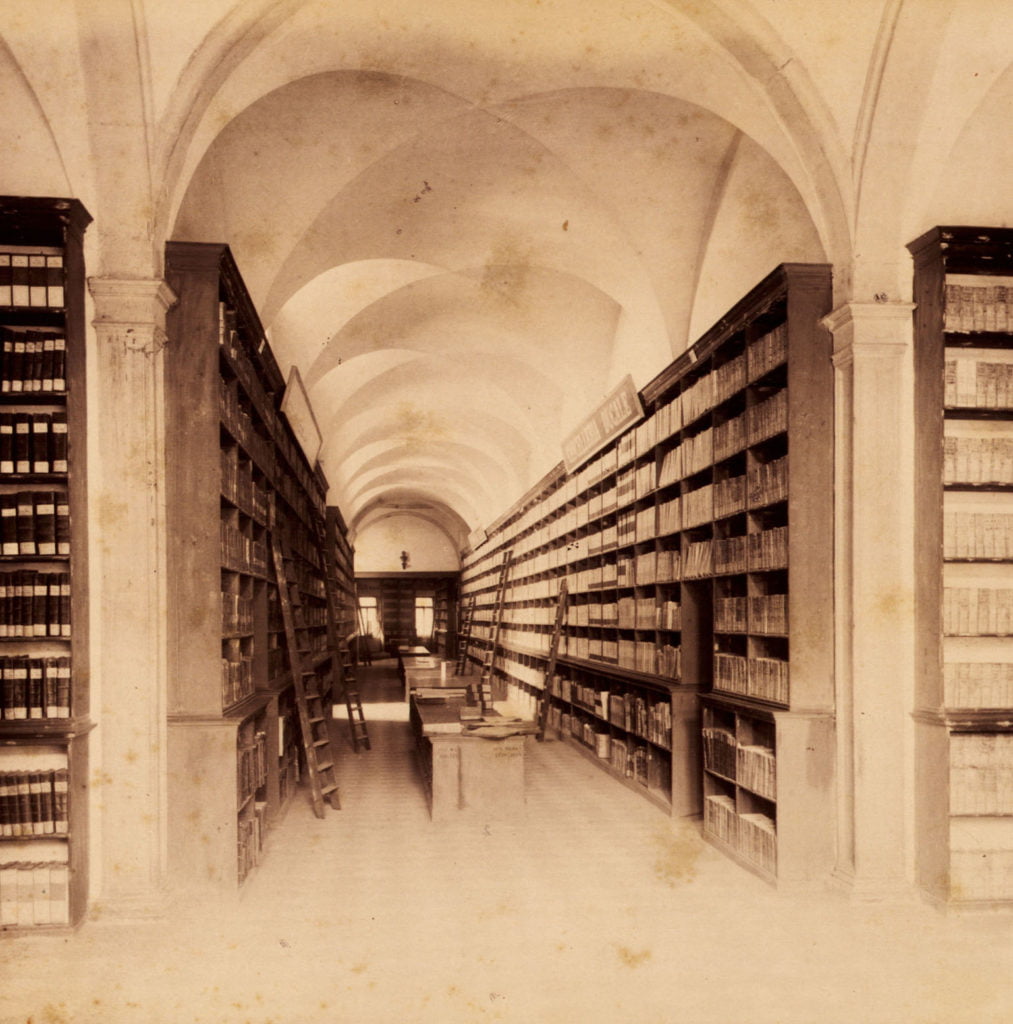
An old picture of the Archivio di Stato di Venezia (copyright MIBAC, Ministero per i beni e le attività culturali).
The research work started in October 2017 at the Venice State archive, where it was possible to find a large number of documents. Here different collections were used: notarial and court collections contained post-mortem probate inventories that were requested by family members or appointed tutors in order to estimate the inheritance. In Venice I was able to find more than 600 inventories, of which 450 ca. will be included in the database (we are excluding mercers, goldsmiths and other high rank professions).
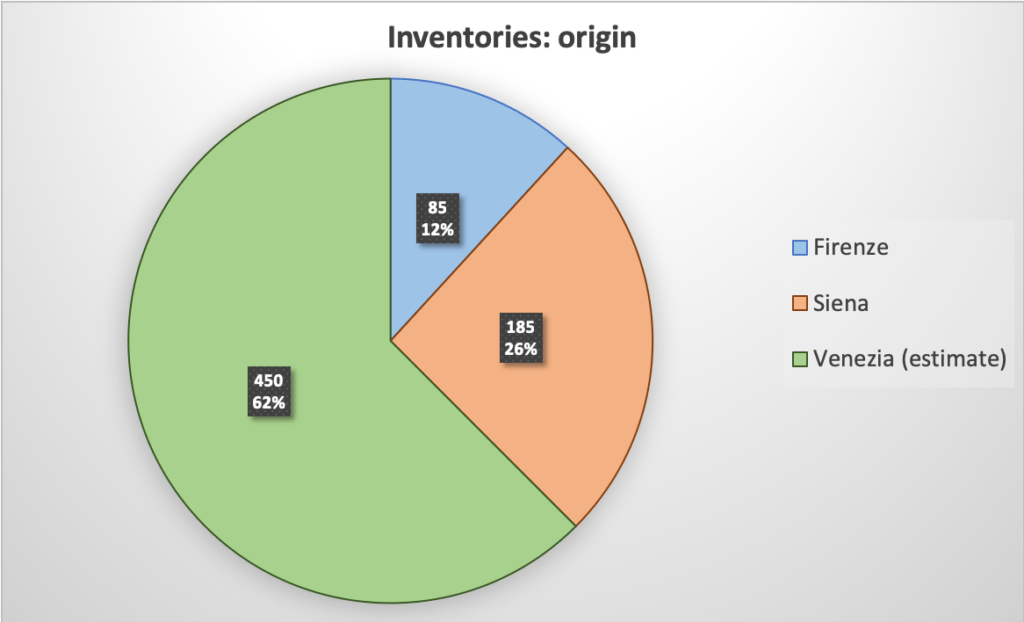
Origin of the inventories in the database.
At the beginning of 2018, the research focused on Florence. I spent there 3 months doing research at the archive, particularly in the collection of the Magistrato dei Pupilli. As for the Giudici di Petizionin Venice, this institution had the aim to certify inheritances. However, while in Venice the Petizion courtrecorded all the inheritances, the Magistrati dei pupillifocused in granting a tutor and the management of the inheritance for the children. Probably for this reason, Florence had consistently less inventories recorded for artisans. Here I was able to gather 206 inventories, of which 85 could be used in the final database. However, despite the lower number of inventories, Florence is precious for all the account books that are preserved there. From the medieval to the contemporary age, it is possible to find almost any type of account book produced by traders, artisans, hospitals and other institutions at the State Archive. In our case, I was able to find a few account books that will help us better analyze and understand the data from the inventories. These books are usually journals written by peddlers, shoemakers and mercers, and they record all the transactions made in their shops or stands.
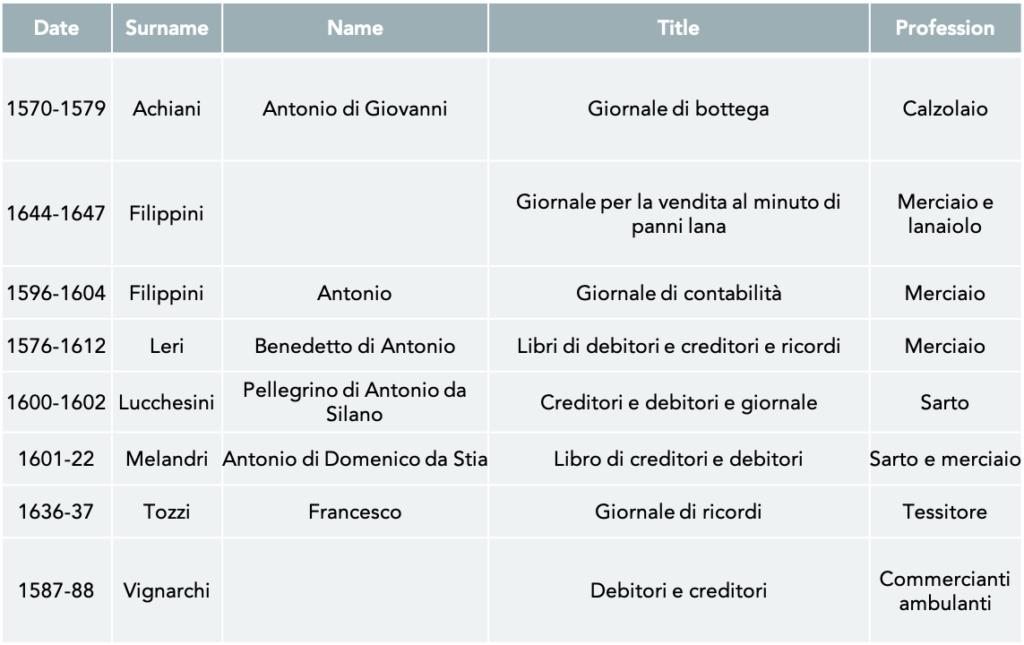
The account books from Florence.
The final stage of the research was carried out in Siena. For this city, I could profit from the experience of Paula Hohti. Part of the material for the 16thcentury had indeed already been identified by Paula, and my work here consisted of continuing the analysis of the collection, the Curia del Placito. The Curiain Siena had the same role as the Magistrato dei Pupilliin Florence. However, Siena was more fruitful from the point of view of the artisan’s inventories, since we were able to gather 203 inventories of which 185 were used for the database. To these, it is possible to add the auction records of the cases where the Sienese government had authorized the tutor to liquidize some of the assets of their underage protégés. These lists of goods—despite being very often partial—are particularly useful in understanding the value of items, since they report the selling price, as well the items that were chosen for being sold, thus considered as a reserve of value.
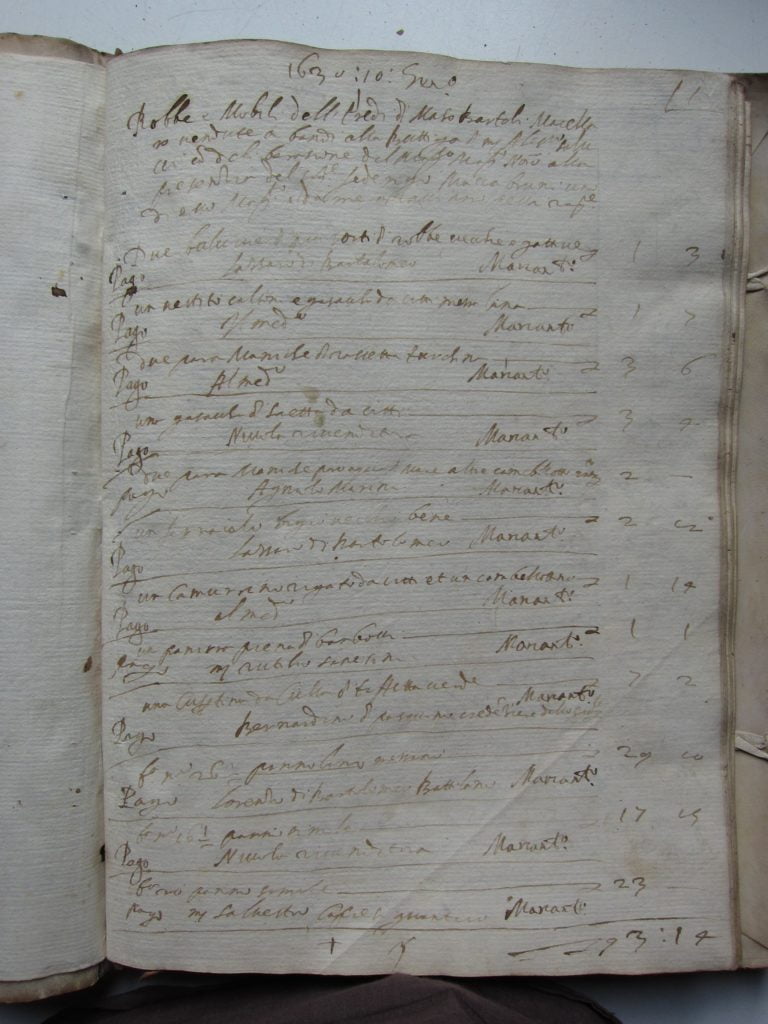
A page from the auction records of Bartolo macellaio from Siena (ASSi, Curia del Placito, Vendite di immobili dei pupilli, reg. 1334, c. 1r, 10 January 1630).
As it is possible to see from Chart 1, the distribution of the inventories is not equal, and this is of course due to the typology of the collections, to the role of the institutions that recorded the inventories, and to the population and size that characterized the cities, all of which will be considered when comparing them. Not equal is also the temporal distribution of the artisan’s inventories, which are of course linked to health issues among the population, as well as to local events or to problems related to the preservation of the documents. (see Charts 2, 3 and 4).
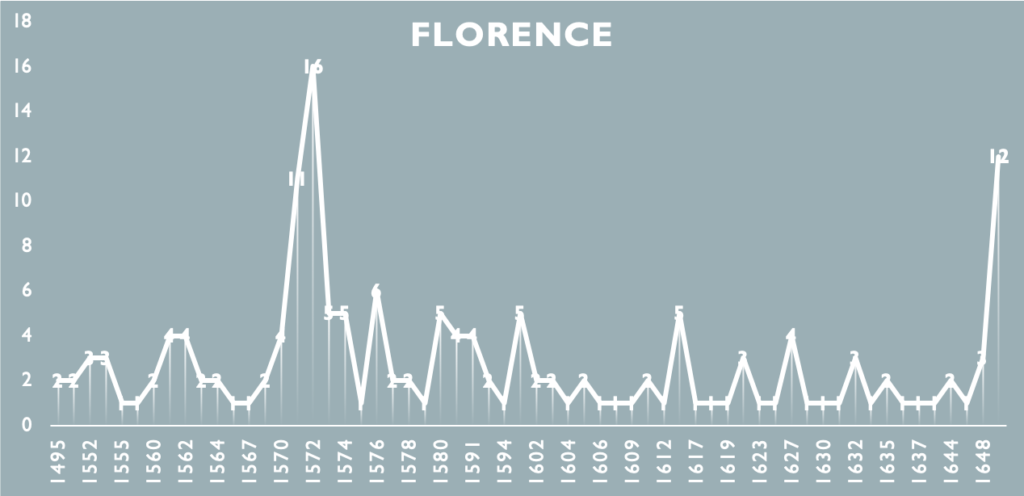
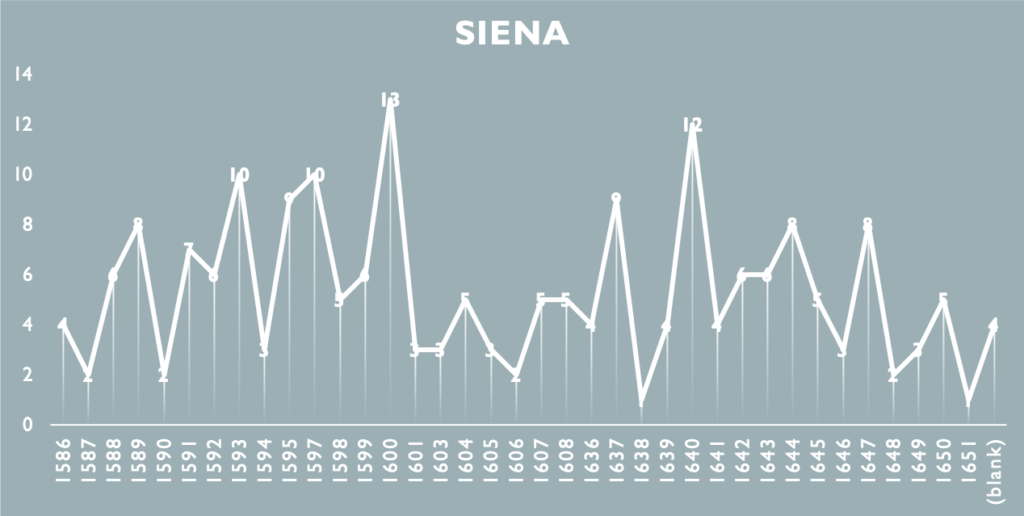
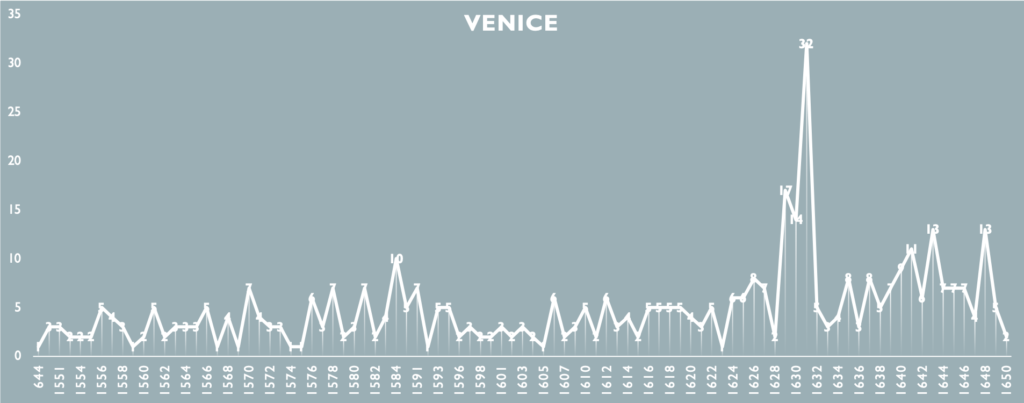
Temporal distribution of artisan’s inventories.
What’s next?
After this first phase of archival research, it is time now to implement the database! The inventories from Siena and Florence have been already transcribed, but Venice is still an open field. So…let’s get out the reading glasses and make sure that by next spring also the inventories from the Serenissima will be fully transcribed. Stay tuned!

